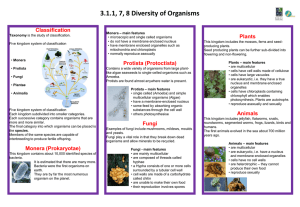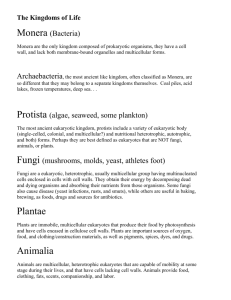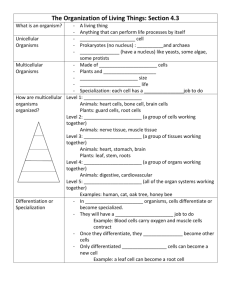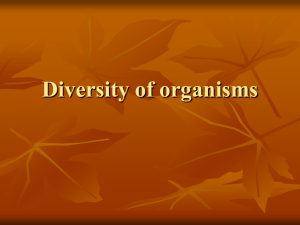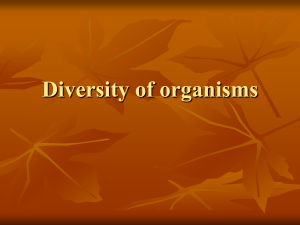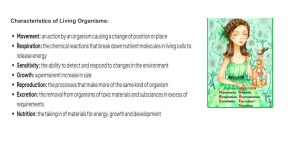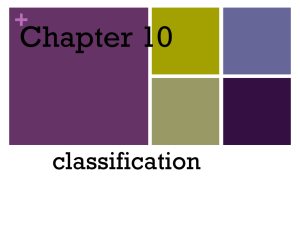Characteristics of Life
advertisement
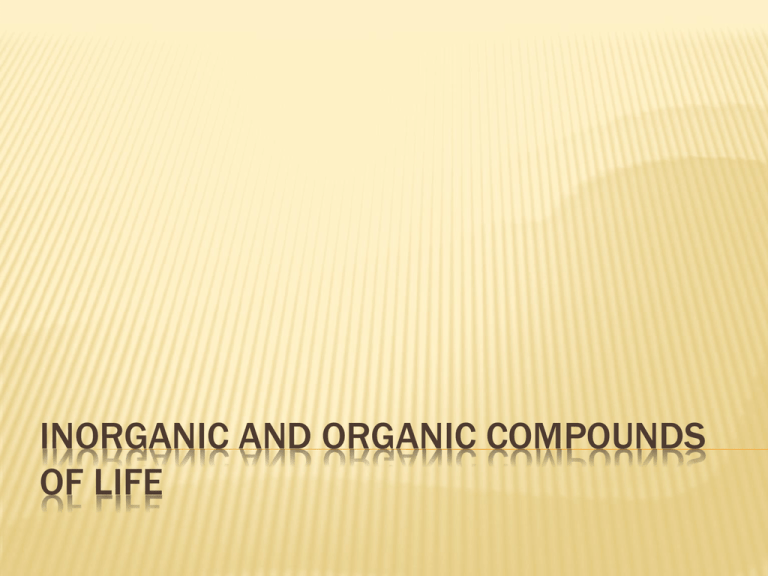
INORGANIC AND ORGANIC COMPOUNDS OF LIFE FOLDABLE Take out a piece of notebook paper from your binder Fold the sides in like shutters on a house CHEMICALS OF LIFE Basic Inorganic • Water (H2O) Carbon dioxide • • • (CO2) Ammonia (NH3) Oxygen (O2) CHEMICALS OF LIFE Organic Compounds of Life • Carbohydrates lipids proteins nucleotides These compounds all contain the element carbon. • • • • 14 MINUTES VIDEO ON CHARACTERISTICS OF LIFE Biology__The_Science_of_Life__The_World_of_ Living_Things.wmv Do the worksheet provided that goes with the video CHARACTERISTICS OF LIFE: ANSWER TO VIDEO QUESTIONS BIOLOGY The Science of life THE CHARACTERISTICS OF LIVING THINGS 1. all living things are made from the same basic chemical ingredients. 2. all living things are composed of cells. 3. they require water and a source of energy to run their life processes. THE CHARACTERISTICS OF LIVING THINGS 4. the ability to reproduce and grow. 5. all living things have limited lifespans 6. respond to their surroundings, is extremely important. THE CHARACTERISTICS OF LIVING THINGS 7. organisms respond to their surroundings, namely, through their ability to move. 8. they are able to repair injuries to themselves, provided the damage is not too severe. 9. they can undergo change over time. We know from discoveries of ancient fossilized organisms that life appeared on earth about three and one-half billion years ago. CLASSIFICATION Classification involves placing organisms that share the same traits into the same groups. KINGDOM MONERA The very simplest living things belong to the Kingdom Monera. microscopic size. There are about 3000 different types, or species All monerans are unicellular they lack a nucleus. can be either autotrophic or heterotrophic. KINGDOM PROTISTA consists of microscopic plant-like and animal-like creatures has about 30,000 species. unicellular They have a nucleus, but lack cell walls. Both Autotrophic and heterotrophic KINGDOM PLANTAE multicellular organisms Plant cells have both a nucleus and a cell wall. Plants are autotrophs and are able to use the sun's energy to make their own food. There are about 285,000 species of plants KINGDOM FUNGI the mushrooms, molds, and yeasts— are also multicellular organisms. However, unlike plants, fungi are heterotrophs and cannot make their own food. There are about 100,000 species of fungi. KINGDOM ANIMALIA over one million species of animals. Animals are heterotrophs and cannot make their own food. Like plants and fungi, animals are multicellular organisms, but animal cells lack cell walls and have just one nucleus. QUIZ: TRUE OR FALSE 1 .Heterotrophs can make their own food. 2. Plants are multicellular organisms. 3. Bacteria are Monerans. 4. Homeostasis means maintaining a balanced internal environment. 5. Mushrooms belong to the Kingdom Protista
